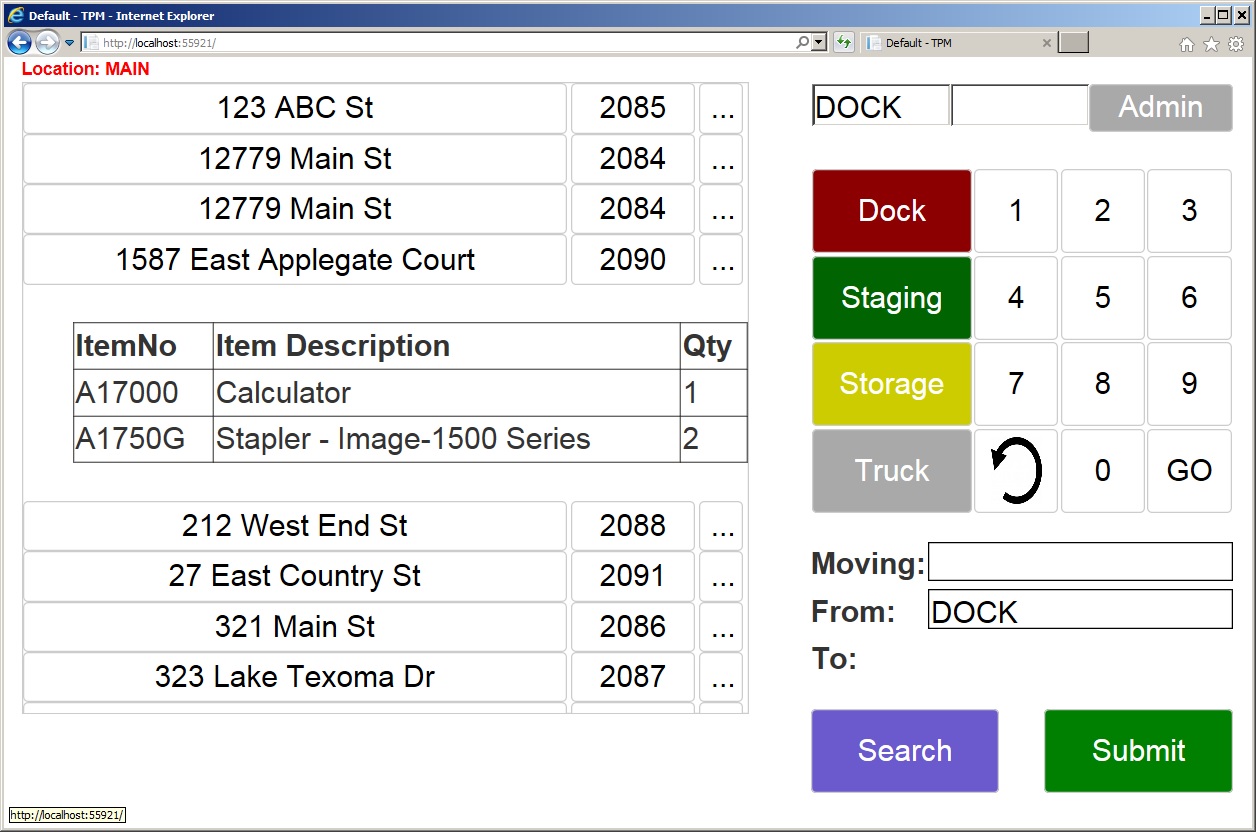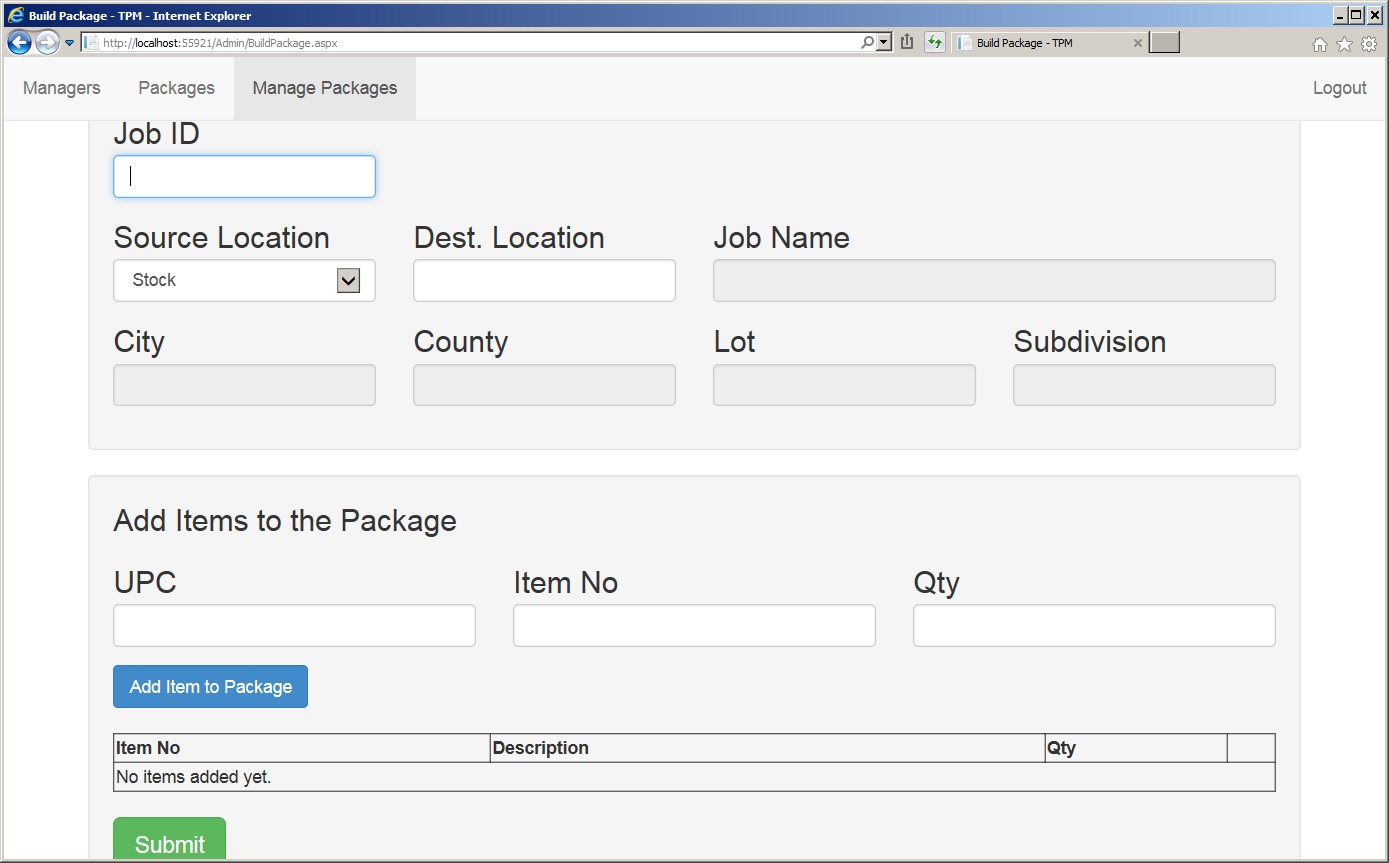Package Management
A custom software success story.
Business Need
This customer in construction business needed a mobile solution to manage their warehouse better. All their inventory is linked to projects. When received, it already has a project number and name associated with it, physically attached to the pallet. They move the whole pallet and place it in a bin in their warehouse. The job, and all items associated with it then may be moved multiple times, between different bins in the warehouse, to and from trucks, can be consumed partially on job site, and can be brought back to warehouse, fully or partially.
The physical movement of the pallets in the warehouse needed to be reflected in Sage 300 inventory in real-time, and it just wasn't happening, because people operating forklifts in the warehouse were not the same people who were working in Sage. Inventory management was in disarray.
Solution
A custom application was developed for the client, optimized for iPads, that could be used to update inventory real-time by the forklift operators. This is how the main page of the application looks.

This page shows the list of packages (pallets) at the receiving dock. User can expand a package to review the list of products in it, select a package, and move it to a bin in a warehouse, or to a truck. This company categorizes their bins into Storage, Staging, and have a numeric suffix associated with each type. Hence, the keypad on the right is used to select the type of bin (or truck) and its number. The built-in keyboard of iPads is not used.
Administrative Functions
Administrative functions are available to manually build a job by adding items to it, split a job into multiple jobs, or borrow items from one job to another. All controlled by security PIN. Below is an example of the screen used to build a new package from scratch.

Conclusion
This highly custom application resolved the customer's needs related to inventory management and is now considered a mission critical part of their system.